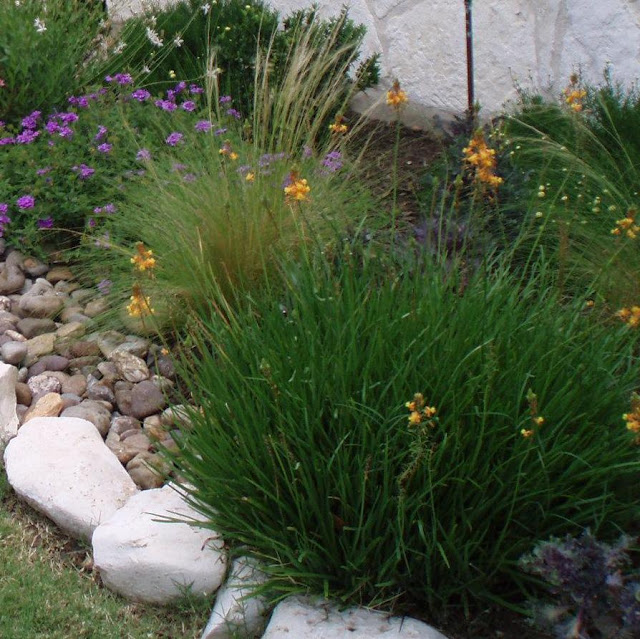Gaura (Gaura lindheimeri)
Native Range: Texas
Sun/Shade: Full sun to part-shade.
Flowers: Pink or white on cascading stems in spring and fall.
Landscape Use: This Hill Country native is a perennial roadside wild flower. It
makes an attractive low cascading, elegant, colorful, bush that is dependable
and more substantial than some other delicate wild-flowers, and looks
interesting even when not in bloom.
Container Use: Very nice cascading over lower color in pots. Size: The lower
foliage gets up to one foot tall while the airy flower stems may reach 2 ½ feet
high and wide.
Type: Perennial that returns faithfully after freezing weather in spring. Deer
Resistance: Not enough information.
Butterflies: Butterflies love it.
Drought Tolerance: Very drought tolerant but looks best with occasional
watering.
Soil: Not particular about soil as long as it drains well and does not remain
constantly wet. Does well in rocky soil or even better with soil enhancement.
Water: Smart Watering Principle=Water well when first planted then allow to
dry slightly, without wilting, then water deeply again, etc. Easy Watering
Principle=Water every day the first week; every second day the second week;
every third day the third week; every fourth day the fourth week; every fifth day
the fifth week. A soaking rainfall should last for about two weeks worth of
watering. Do not keep constantly wet.
Fertilizer: Looks even better with regular fertilization.
Maintenance Tips: Cut off old flower stems to the base foliage to keep it
blooming and tidy. Can let this plant go natural, and it will still give an elegant
look to the landscape.
Rating: Rates high as a landscape plant.










